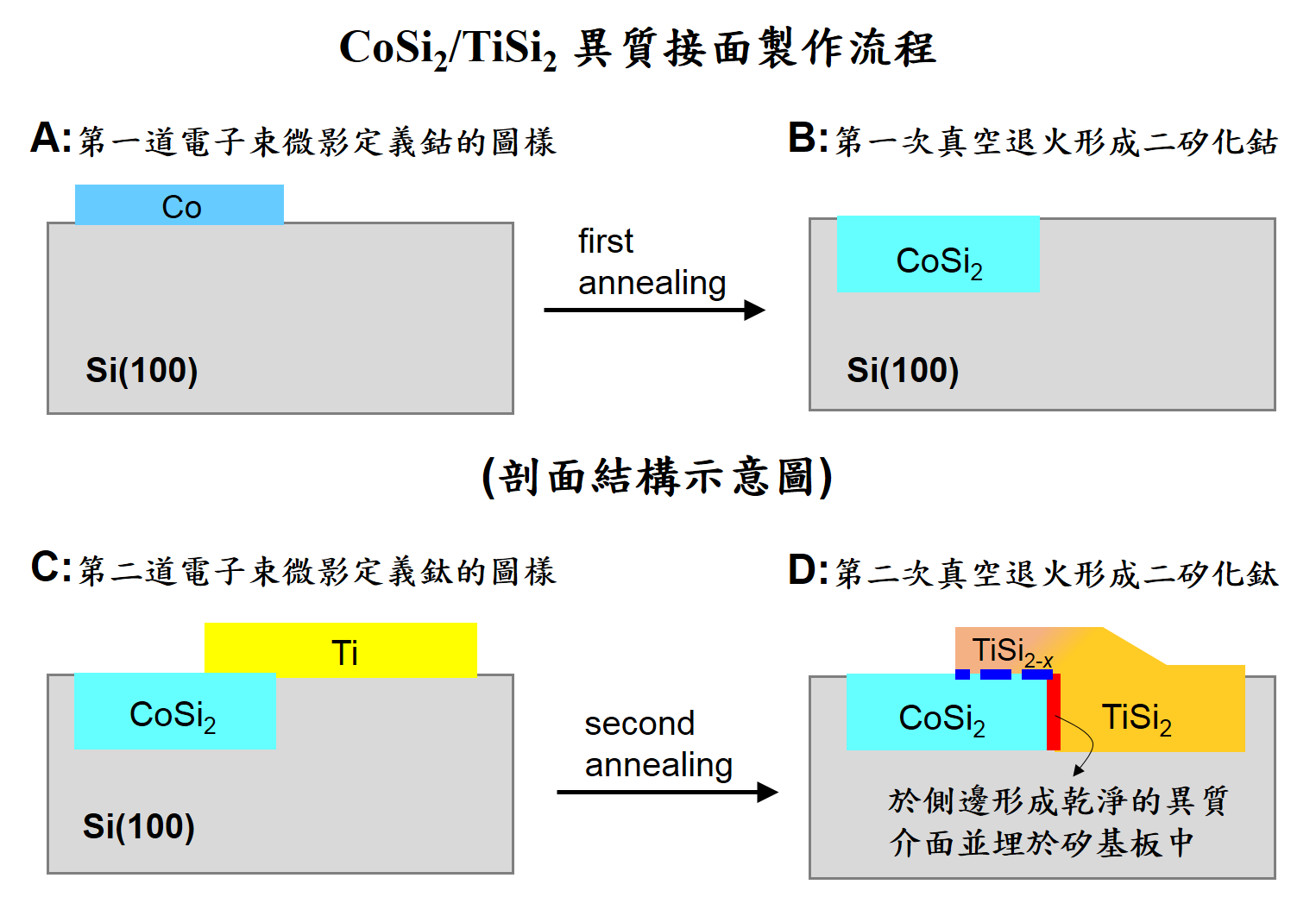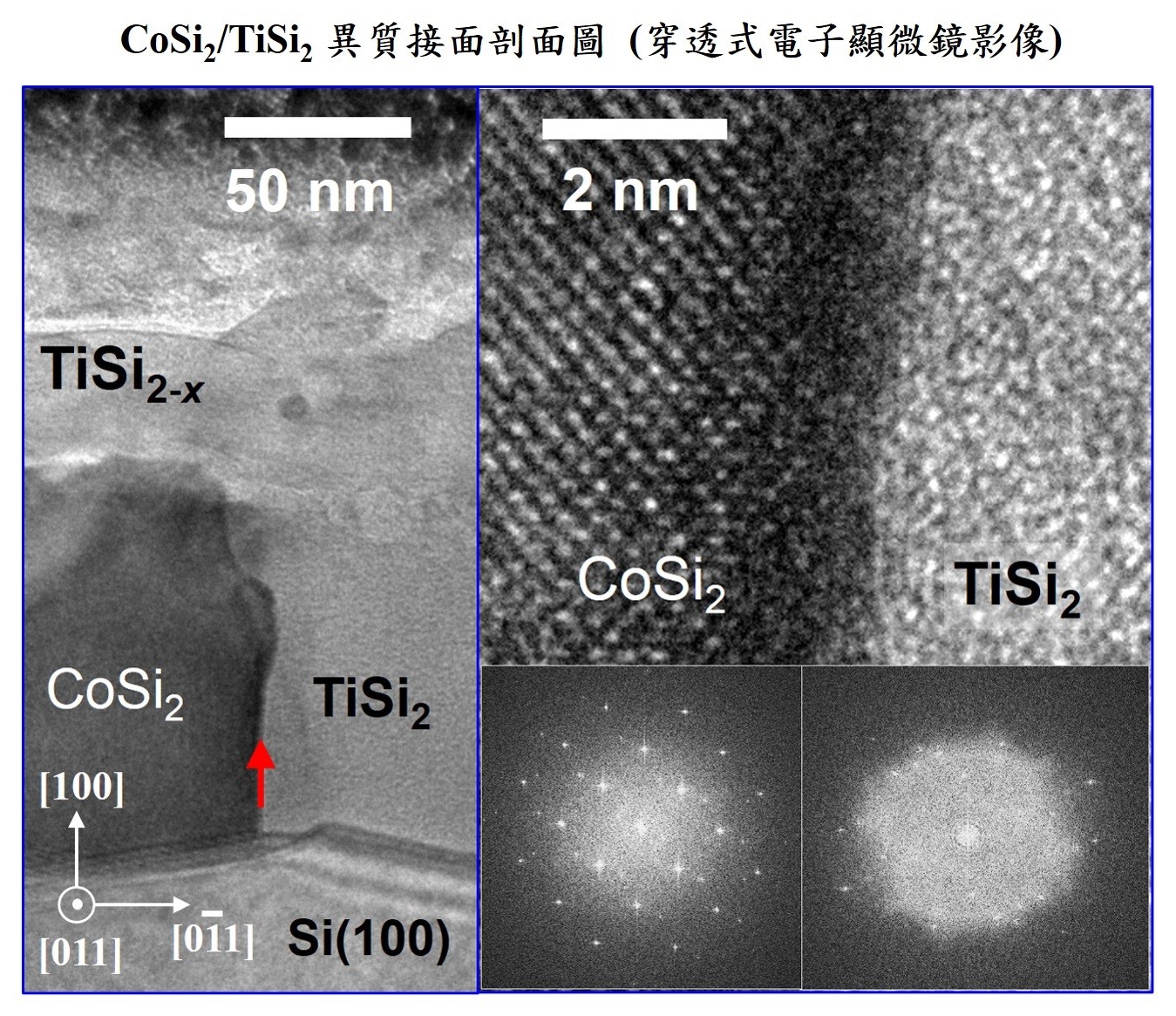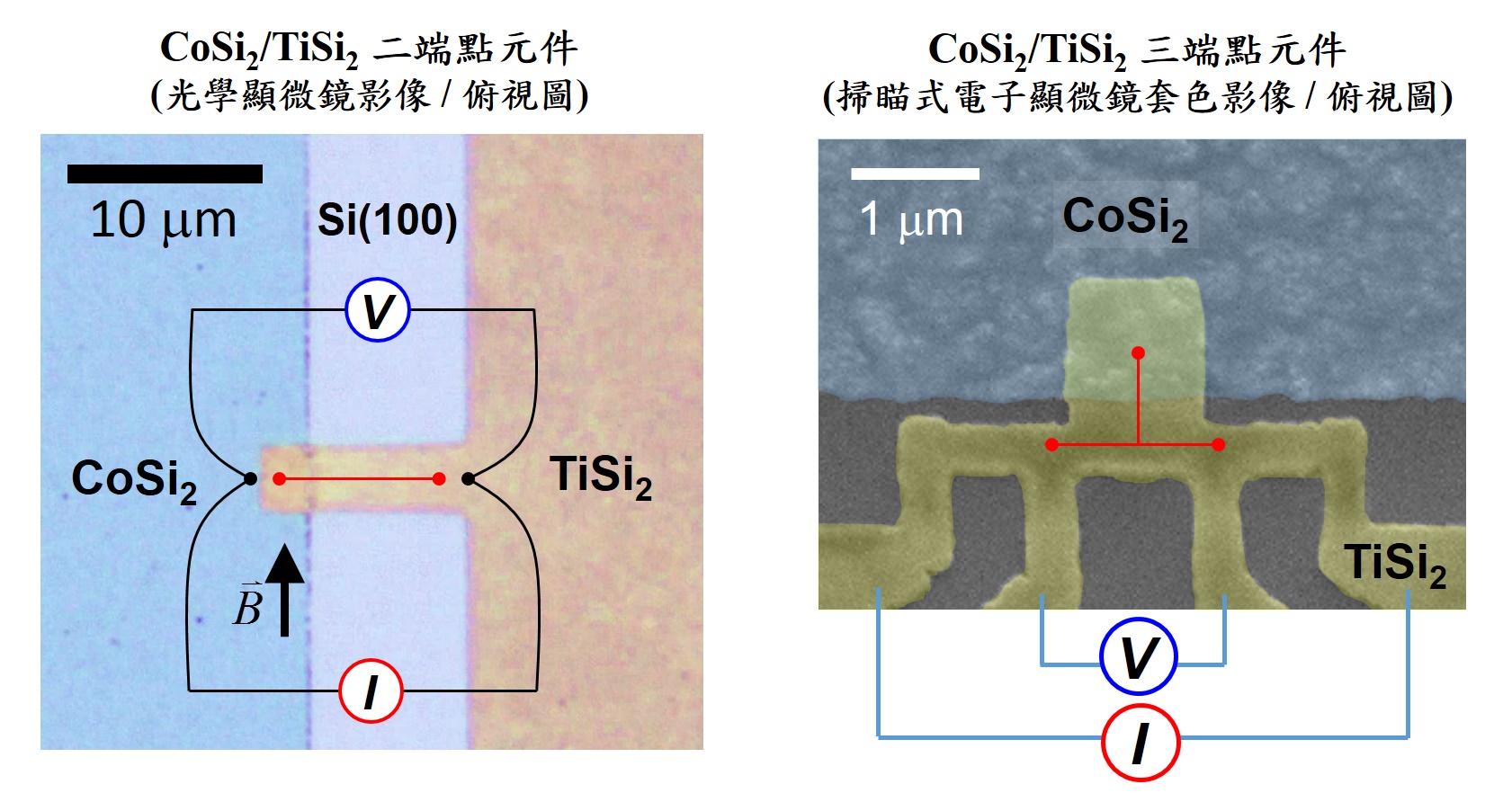| Technical Name | Fabrication technology of topological superconducting silicide heterostructures | ||
|---|---|---|---|
| Project Operator | National Yang Ming Chiao Tung University | ||
| Project Host | 林志忠 | ||
| Summary | Through specific semiconductor processes, we grow cobalt disilicide (CoSi2, a kind of superconducting silicides)titanium disilicide (TiSi2, a kind of non-superconducting silicides with topological band structures) layers to form a hetero-interface on undoped Si(100) substrates. This clean CoSi2/TiSi2 interface allows the charge carriers of the two silicides to easily diffuse into each other,in turn changes the material properties near the interface to induce unconventional topological superconductivity. Based on this property, submicron devices with twothree terminals can be fabricated for future applications in topological quantum computations. |
||
| Scientific Breakthrough | We fabricated cobalt disilicide/titanium disilicide (CoSi2/TiSi2) heterostructures with topological superconductivity based on the concept of "mixing the properties of two materials". Such a concept allows two silicides, which were originally used as interlinks in silicon-based integrated circuits, to match each other to generate new physical properties (i.e. topological superconductivity)expand the breadth of fundamental research. |
||
| Industrial Applicability | Based on the cobalt disilicide/titanium disilicide (CoSi2/TiSi2) heterostructure, new types of topological superconducting devices will be developed. The purpose is to manipulate two topological superconducting quasi-particles to move clockwisecounterclockwiseexchange their positions. This manipulation is a kind of braiding encoding process, which is the cornerstone of topological quantum computing. In addition, CoSi2 itself has good epitaxial growth characteristics, which is conducive to the production of low-noise traditional superconducting devices, such as Josephson junctions. |
||
| Keyword | Superconducting silicides cobalt disilicide titanium disilicide silicide heterostructures electron-beam lithography high-vacuum annealing topological superconductivity braiding coding Josephson junctions Superconducting QUantum Interference Devices | ||
- sfchuang@nycu.edu.tw
other people also saw







